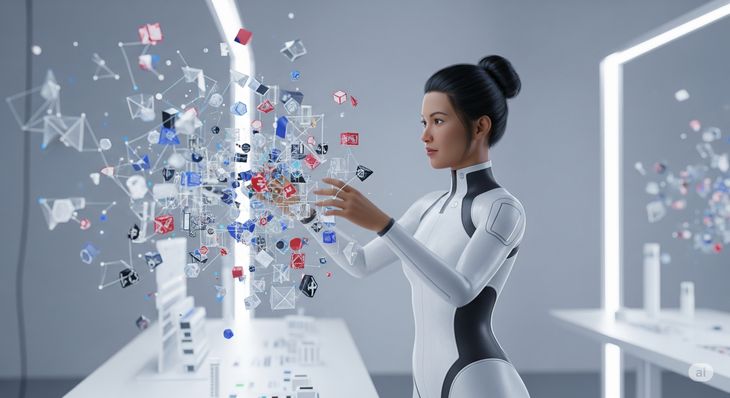
The input data is neatly organized before being used to train the AI.
Scale AI doesn't often make headlines, nor is it among the tech companies that create tangible products for users. But for artificial intelligence developers, they are an indispensable part of the entire model training process.
Scale AI's work takes place quietly behind the scenes, where raw data is processed by humans and transformed into lessons for machines. This allows new intelligent systems to gradually understand the language, images, emotions, and behaviors that humans exhibit in the real world .
Who is Scale AI and what do they do?
Compared to OpenAI, Google, or Meta, Scale AI is a relatively quiet player. While it doesn't directly create chatbots that speak like real people or self-driving cars capable of reading traffic situations, it plays a crucial role in making those technologies smarter every day.
Scale AI was founded in 2016 when its founder, Alexandr Wang, was still a student. Instead of pursuing algorithm development, Wang chose a different path: building a platform specifically for processing data to train artificial intelligence .
In this world, data is the lifeblood. But unprocessed data, such as unclassified images, unorganized conversations, or videos with unclear content, is often chaotic and has no direct value to machines.
Scale AI's job is to clean, classify, and label that massive amount of data. This means they design both the system and the team to identify and organize every tiny detail in a photograph, a piece of text, or a video clip.
For example, for a self-driving car to learn to stop in the right place, each frame captured from the camera must be clearly identified as a crosswalk, a traffic light, or a pedestrian. With millions of such data points, artificial intelligence can learn behavior accurately.
Thanks to such data preparation processes, models like ChatGPT, Claude, or in-car virtual assistants can understand natural language, accurately recognize images in real-world environments, and respond in a human-like manner.
To train AI to be intelligent, we must start with the smallest things.
No matter how complex the structure of an artificial intelligence model, it is merely an empty skeleton if it is not fed with data. Unlike humans, who can learn from experience and intuition, machines only know how to repeat what they have already seen. That is why training data plays a crucial role in creating an effective model.
For a chatbot to understand how humans ask questions, it needs to have been exposed to millions of conversations. For a car to recognize a pedestrian in the rain, it needs to have seen hundreds of thousands of similar images. All of those real-world examples must be accurately labeled for the computer to learn from. Without the right labels, the artificial intelligence will misinterpret. Without enough diverse data, it will react poorly in real-world environments.
This explains why the work of Scale AI is so important. They not only collect data but also ensure that it is organized accurately, diverse, and learnable. This allows subsequent models to react like a person with real-world experience.
A prime example is in the field of self-driving cars. To train a car to handle unexpected situations such as pedestrians crossing the road or motorcycles coming from the opposite direction, the artificial intelligence model needs to preview tens of thousands of similar scenarios.
Such data cannot be readily available, nor can it be left for machines to learn on their own. It must be prepared, organized, and its accuracy ensured by humans before artificial intelligence can begin the learning process.
That's where Scale AI's role lies. They are the ones who create the lessons, not with textbook knowledge, but with billions of carefully refined real-world examples. Every stream of data that passes through their hands becomes a building block in the understanding of modern artificial intelligence.
From the lab to the street, data still comes first.
Scale AI's role extends beyond text processing; it's also involved in training computer vision for self-driving cars. Technology companies like Tesla, Toyota, and General Motors have all collaborated with Scale AI to teach vehicles to recognize pedestrians, read traffic signals, and handle unexpected situations.
In addition, Scale AI supports other fields such as defense, satellites, and mapping. They process images from cameras, radar, and space-based imagery to help models recognize terrain, classify objects, or detect threats early. A satellite image that might seem like just a scene of forests and mountains can, through the hands of the Scale AI team, become a dataset that helps the machine predict the direction of wildfire movement.
The expansion into multiple fields shows that Scale AI is not just an auxiliary tool but is becoming a core part of how artificial intelligence learns the world. As the world continues to race to create smarter models, it is quiet companies like Scale AI that are laying the solid foundation for that race.
Source: https://tuoitre.vn/khi-scale-ai-day-hoc-cho-tri-tue-nhan-tao-20250616095516101.htm



















































































































Comment (0)